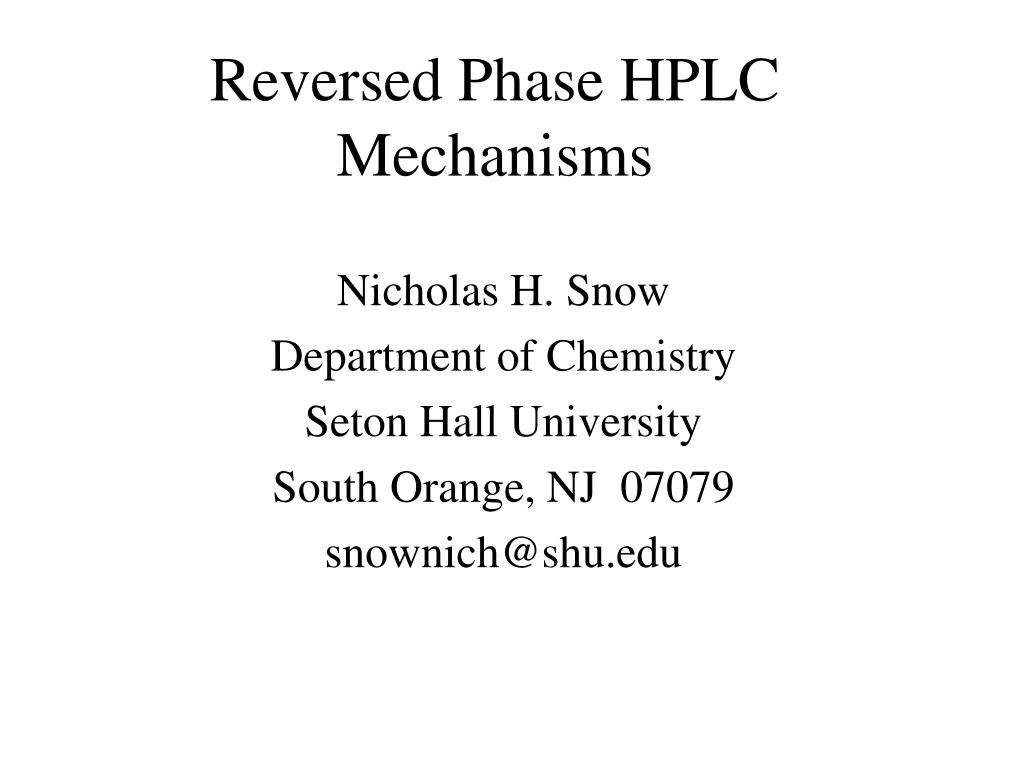
Gradient: 20 to 65% Acetonitrile (0.1% Formic acid) in 7 minutes So lets consider a ‘fast method’ and a traditional method and see what sort of values we get – you can calculate k* for your gradients and see if they fall within the good or acceptable ranges to give a guide on the expected robustness of the methods. When k* is too high, the analysis time is unnecessarily long. If k* is too low, then we risk interference from other sample components or analytes as the analyte does not have enough affinity for the stationary phase to differentially partition away for other sample components. K*is the gradient retention co-efficient, we use k* as opposed to k (that we use in isocratic HPLC) because in gradient HPLC the retention factor of each analyte is constantly changing as we alter the elutropic strength of the mobile phase.įor a ‘good’ method – we would ideally want k* to lie in the range 2 to 10, for an ‘acceptable’ method k* should certainly be in the range 1 to 20. S is a shape selectivity factor which can be estimated byįor analytes < 1000Da a value of 5 is typically used for S Vm is the interstitial volume of the column, which is estimated by Φ is the change in eluent composition (i.e. Lets begin by checking that the gradient we are running is fit for purpose – we can do this using the following simple equation:
#Reverse phase hplc how to#
This month we’ll have a look at some tips and tricks on how to tighten up the robustness of our gradient methods and offer some quick calculations to check we’re getting it right! We also may have examples where gradient methods are not sufficiently reproducible or where our equipment struggles to form a gradient at high percentages of acetonitrile or when running ‘quick’ gradient methods. In another words, the polar compounds elute faster than the non-polar compounds.We know that gradient and isocratic separations work differently – the separation mechanisms differ greatly between the two forms of chromatography. In a reverse phase HPLC, the non-polar compounds are retained in the column longer than the polar compounds. However, large amount of IPA in a mobile phase will cause high pressure in the HPLC system due to its high density value. IPA can be used in both reverse and normal phase as it is miscible with water as well as water immiscible solvents. The mobile phase for a reverse phase system usually consists of water or buffer solution, methanol, acetonitrile and IPA. Note that cyano can be used in both normal and reverse phases and some column manufacturers produce two types of cyano column to suit each phase. There are other columns of more intermediate polarity, such as C8 and cyano. Commonly used packing material in reverse phase columns are silica linked with carbon-18 (C18). The principle is opposite of normal phase system, where the stationary phase is packed non-polar material and the mobile phase is polar. In the 1970s, reverse phase HPLC was developed. In a normal phase application, the non-polar compounds will be eluted faster than the polar compounds.

For example, Hexane: IPA (9:1) means the mobile phase consist of a mixture of hexane and IPA at the ratio of 9 to 1. In most cases, these solvents are used together in a mixture of in order to achieve compounds separation. Most of the solvents used in the mobile phase are water immiscible and have low polarity. Examples of solvents used to make up a normal phase mobile phase are hexane, dichloromethane, chloroform, ethyl ether, and isopropyl alcohol (IPA). Another polar column is cyano column which has a more intermediate polarity. Silica is relatively the most polar compound compared to all other packing materials. Commonly used polar stationary phase or column is packed with silica. Normal phase HPLC means the stationary phase is made of polar packing material while the mobile phase is of non-polar or low polarity solvents. The HPLC consist of a pump that delivers the mobile phase and sample throughout the system, an auto sampler or injector port for sample introduction, a stationary phase where separation of compounds takes place, a detector to detect the compounds and an integrator or a computer system for the visual output. High Performance Liquid Chromatography (HPLC) is used as an analytical instrument to separate certain compounds in a sample.


 0 kommentar(er)
0 kommentar(er)
